To market, to market: the Irish Pavilion pitches up in Venice
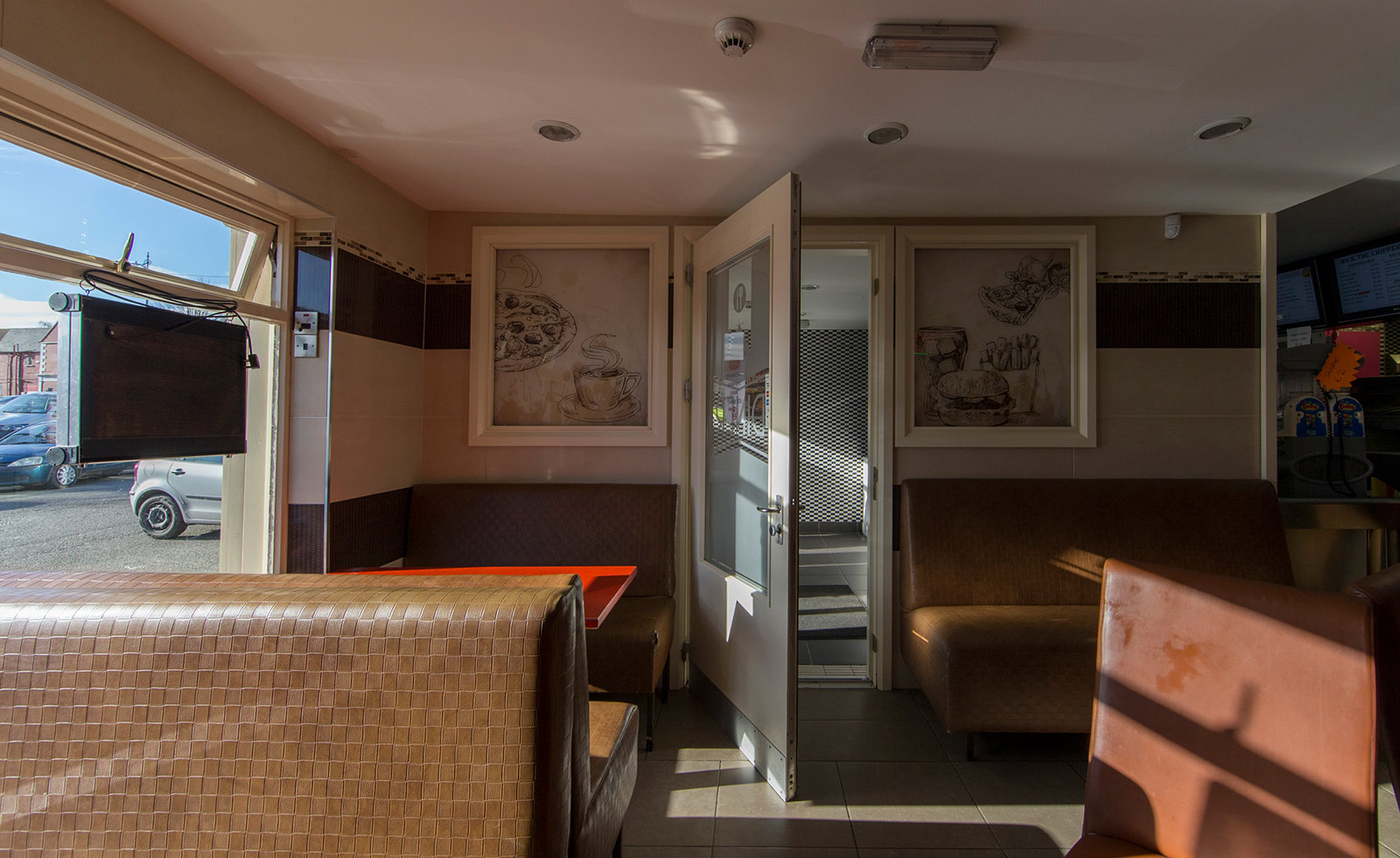
At the 16th Venice Architecture Biennale, Ireland will use its pavilion to look closely at the country. Not at Dublin, where a growing tech hub hosts the headquarters of Google, Facebook and Twitter, and not at its national state recently thrust into headlines and conversations across the UK in the face of Brexit. Instead, the pavilion has set up shop in the market squares of declining rural towns taking a refreshingly useful and non-conceptual approach to a problem, and putting in the work to find out how it might be solved.
Titled ‘Free market’, in response to ‘Freespace’ the main theme chosen by Yvonne Farrell and Shelley McNamara of Grafton Architects, the Irish Pavilion explores the typology of the market square through ten case-study towns across Ireland. Once a place for exchange and congregation, the market square has fallen into a period of decline due to the changing economy, the influx of cars, supermarket life and technological isolation.
Without critique, the exhibition charts historic data, documents contemporary life with photography and gets out onto the streets recording sounds and talking to people to build unique portraits of each town.
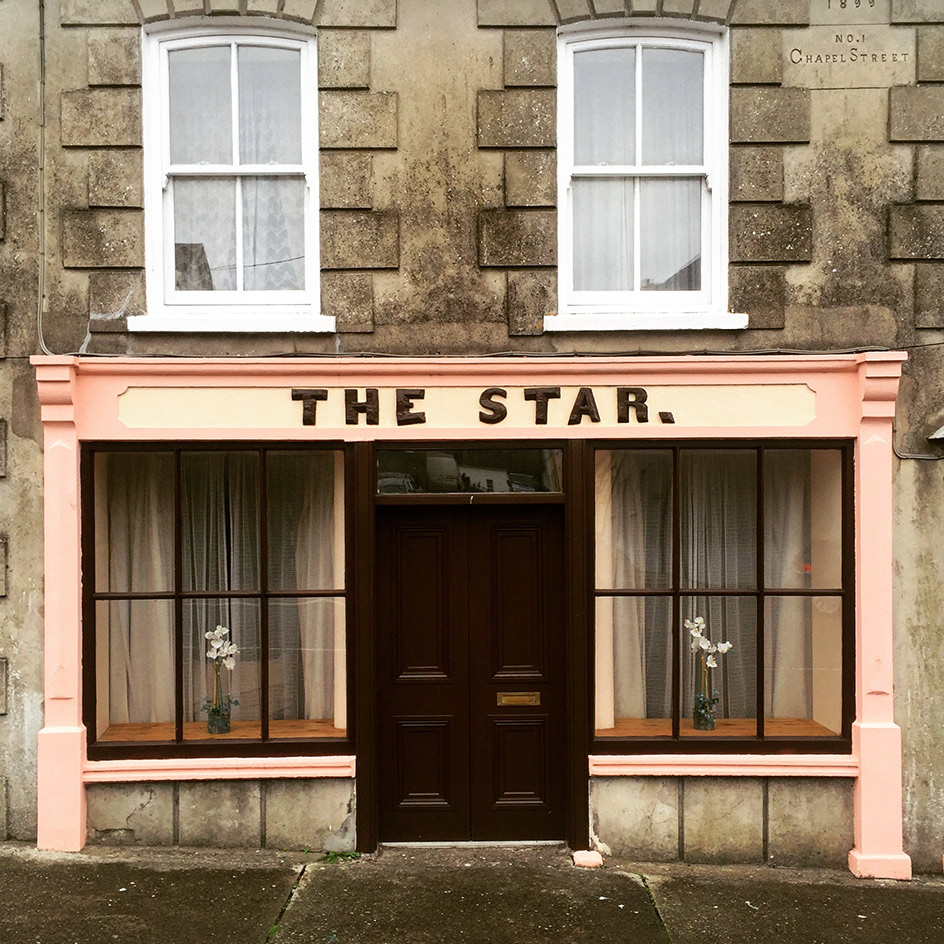
The Star in Roscarbery, County Cork. @our.type
The exhibition is driven by a collective of six curators – five from Ireland and one from the Netherlands – who banded together across common interests in urban life, design and research. They all knew each other somehow through different networks and connections: Laurence Lord and Orla Murphy teach together at the School of Architecture, Planning and Environmental Policy in University College Dublin. Lord also works with Tara Kennedy and Jeffrey Bolhuis at the Cork Centre for Architectural Education. Kennedy is a co-founder with Jo Anne Butler at Culturstruction, their collaborative architecture and design practice – and Miriam Delaney lectures at the Dublin School of Architecture, Dublin Institute of Technology, is connected in another way and seems to know everyone, somehow.
While the down-to-earth group bonded over common ground, they are each located in different parts of Ireland – which allowed the exhibition to gain its wide, yet detailed reach across the country. Instead of a ‘too many cooks moment’, it seems that group-thinking, breadth of skills and intellectual manpower has proved a productive combination.
The curators want to bring the experience of the Irish market place to Venice. It’s a post-modern idea that, in the midst of a Biennale buzzing with sustainable models and utopian ideals brings the international audience back down to reality, to the architecture and design that effects a majority on a daily basis – one in three people in Ireland live in a town after all. In terms of the UK and Brexit, architects and thinkers focussing on small town communities and rural problems is exactly what we need, perhaps other European countries can relate and avoid a similar crisis.
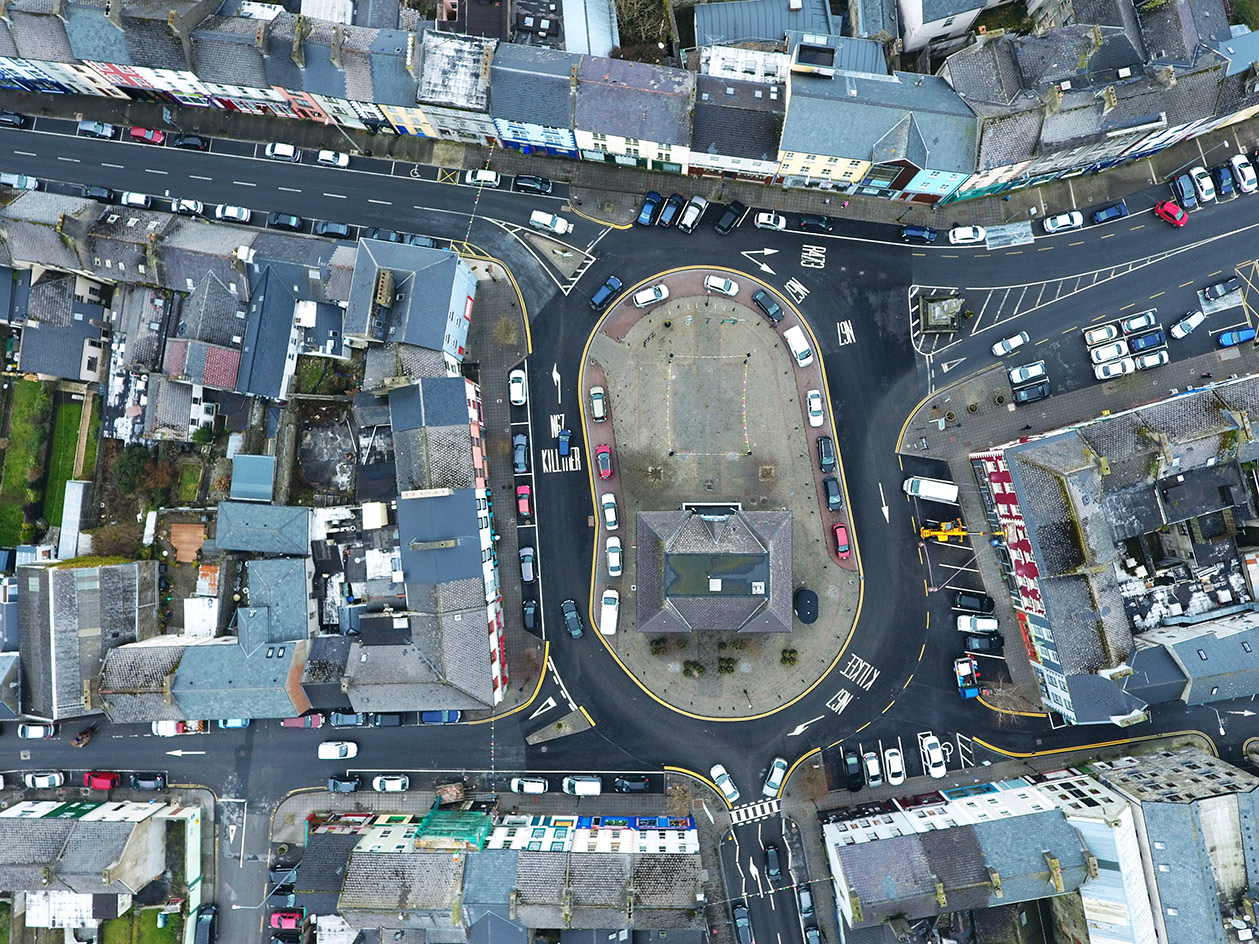
Kilrush town centre in County Clare.
‘Free market’ aims to capture the sensation of being in a market square in Ireland, all inspired by the work of fiction writers, artists, poets and playwrights, the people who have lived and experienced life there and three commissioned soundscapes will be broadcast over the Free Market Radio.
Yet, the pavilion isn’t without future vision. The exhibition positions the market place as a site full of potential, a place of social, political and cultural exchange, central to community cohesion. Proposals for the spaces drawn up by designers and planners, as well as ideas from theorists, critics, policy makers, architects and planners will all meet at the pavilion. A free copy of the Free Market News brings together nearly 40 contributors who lay down ideas into print and bring in wider debates.
On the pavilion’s return to Ireland, the exhibition will journey back from whence it came, to market. It will set up in new formations with a temporary structure that will redesign itself in each context, continuing to grow, gathering and developing its breadth, experience and knowledge.
See all the latest news and stories from Venice Architecture Biennale here
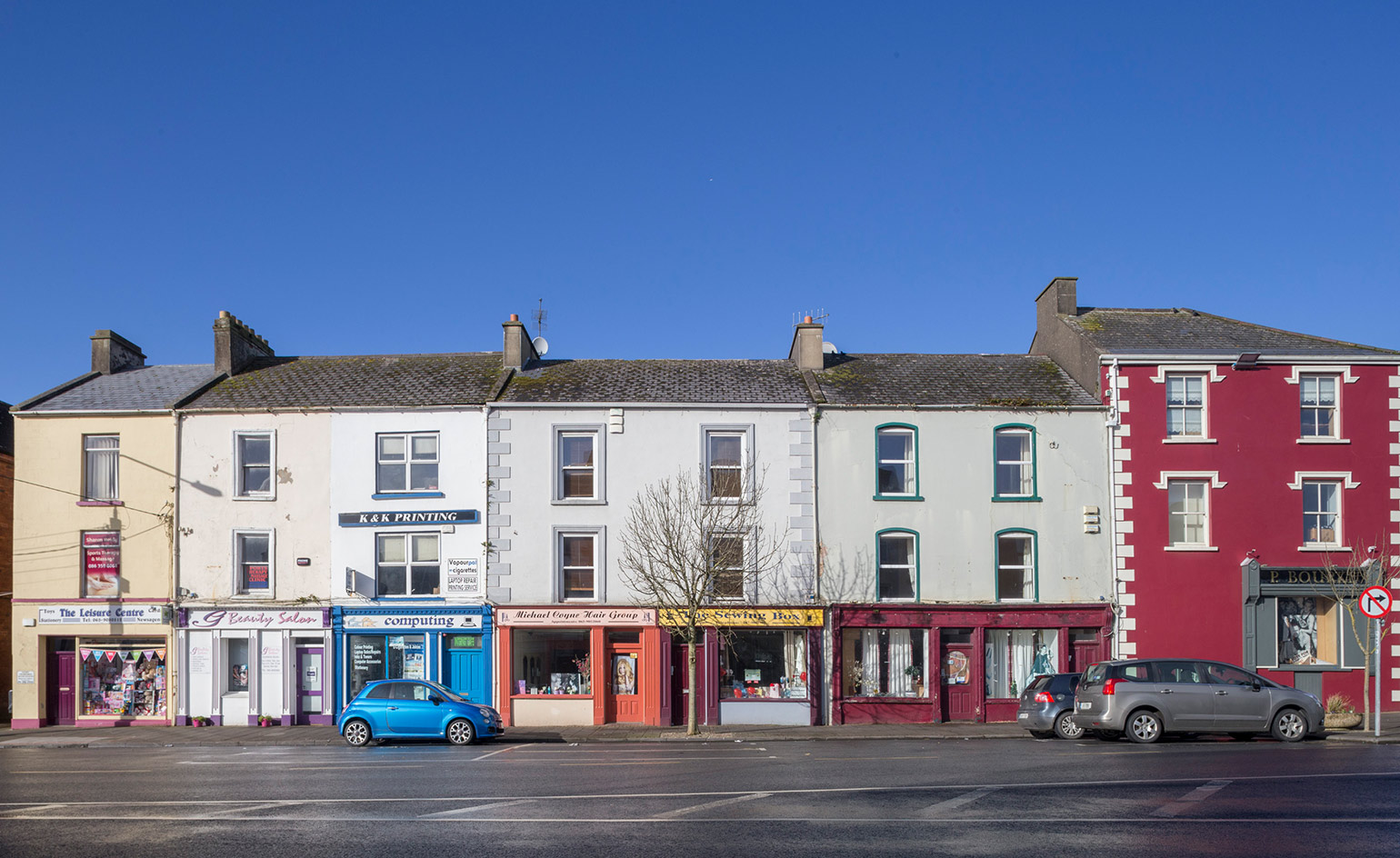
Participant Towns include: Athenry, County Galway; Ballinrobe, County Mayo; Ballyshannon, County Donegal; Bunclody, County Wexford; Castleblayney, County Monaghan; Kilmallock, County Limerick; Kilrush, County Clare; Macroom, County Cork; Mountmellick, County Laois; Templemore, County Tipperary. Pictured here, a photograph from Kilrush Town. © Free Market
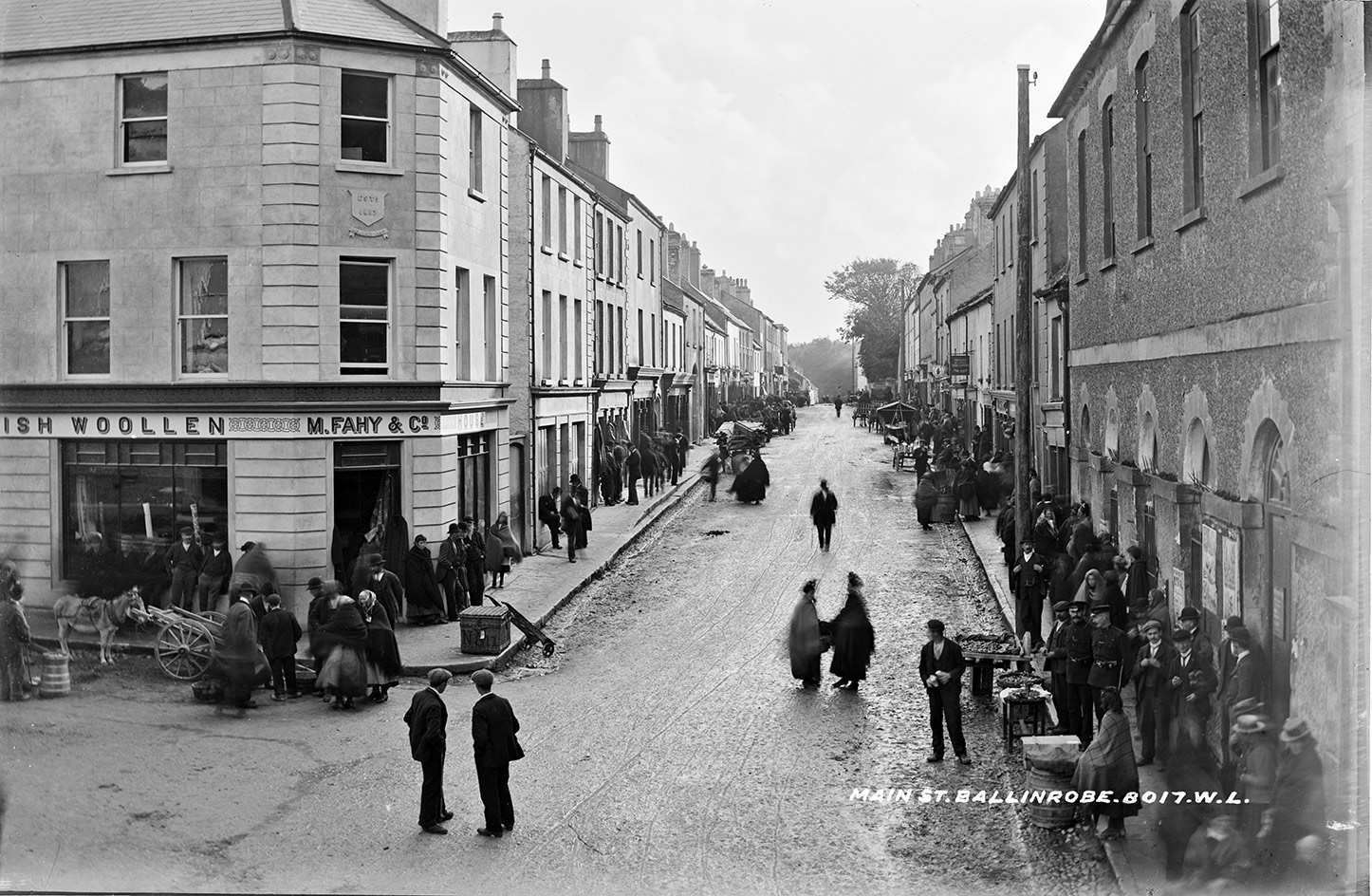
Kilrush Square in County Clare.
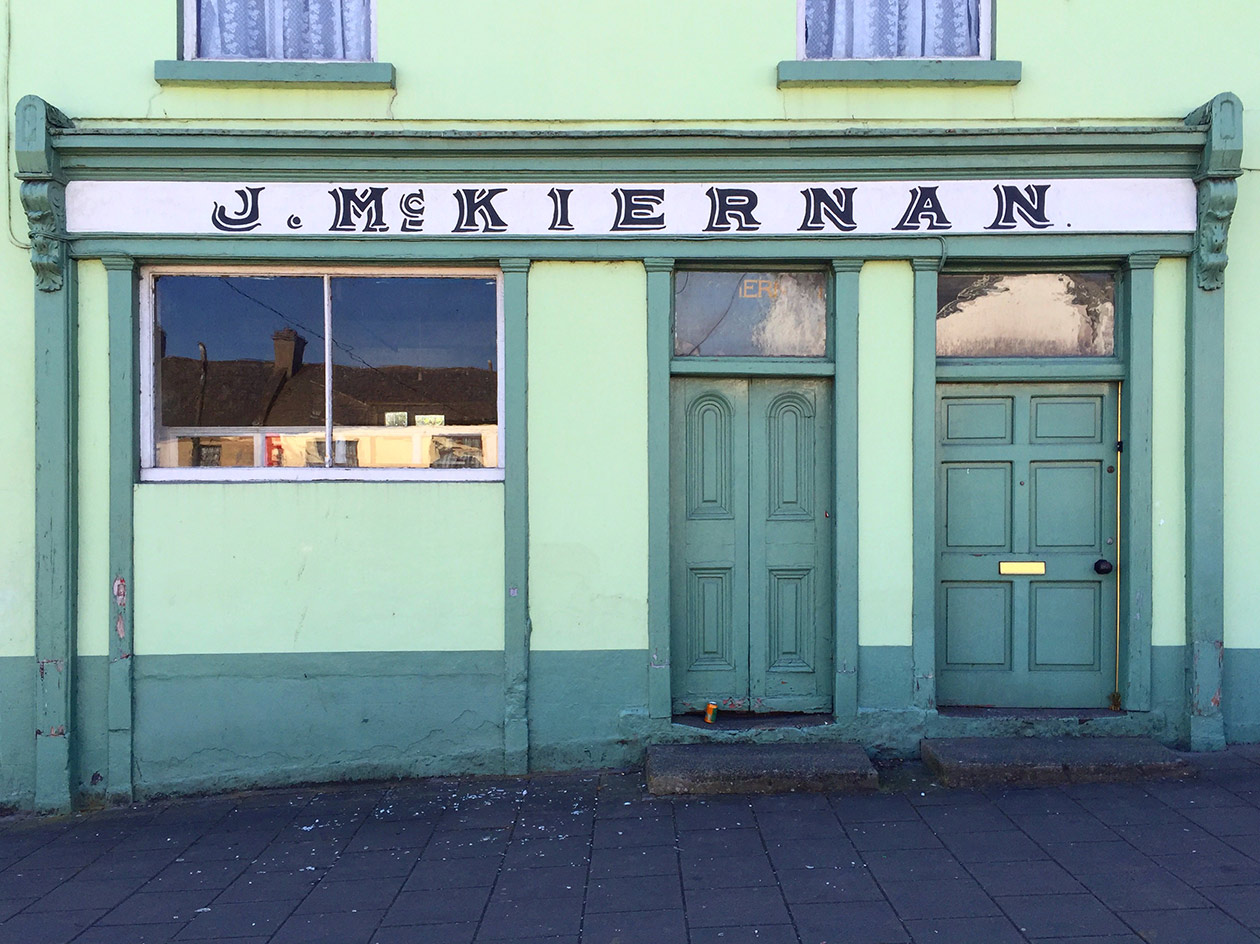
J. Mc Kiernan’s in Kingscourt, County Cavan. @our.type
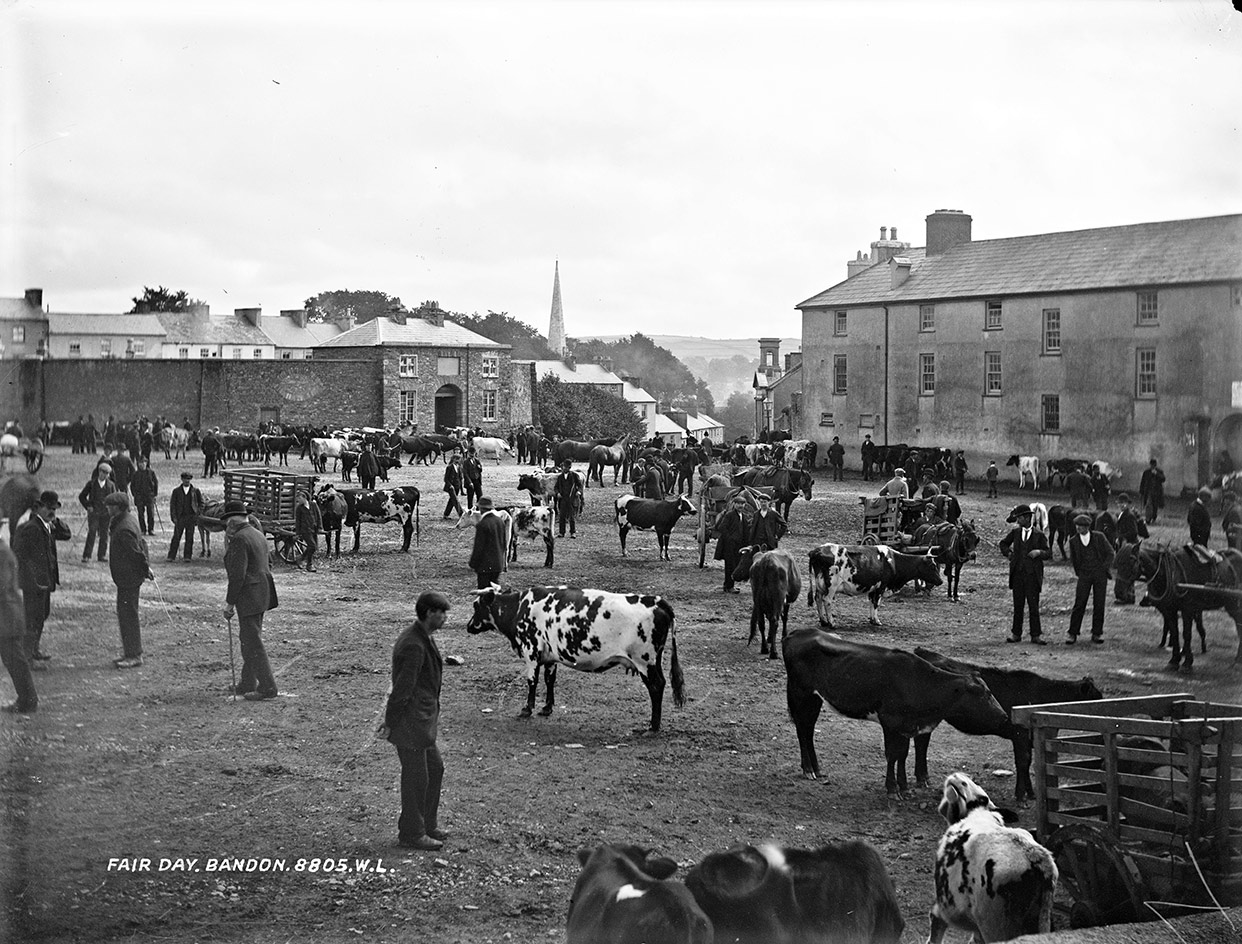
Bandon in County Cork.
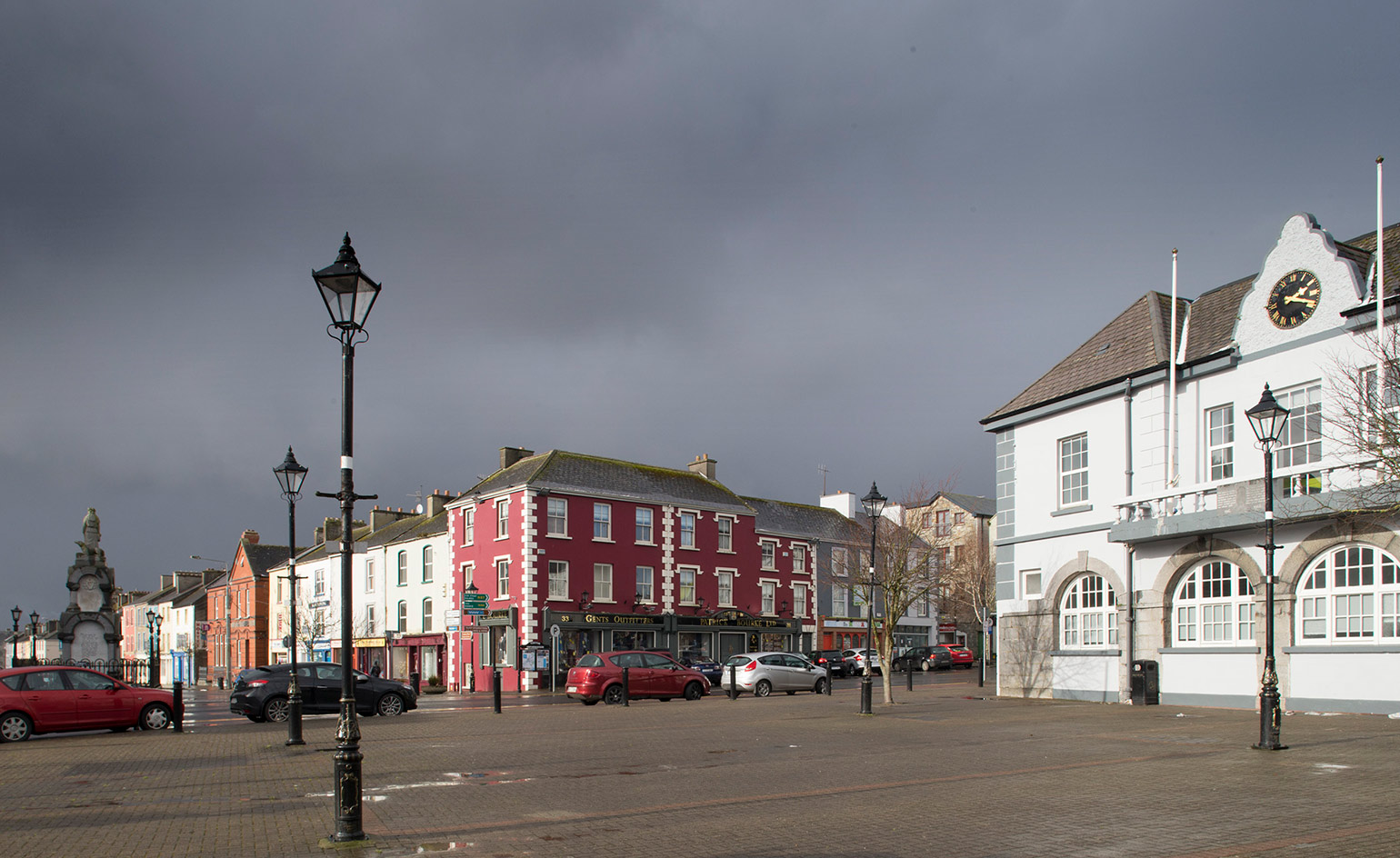
Kilrush Town. © Free Market
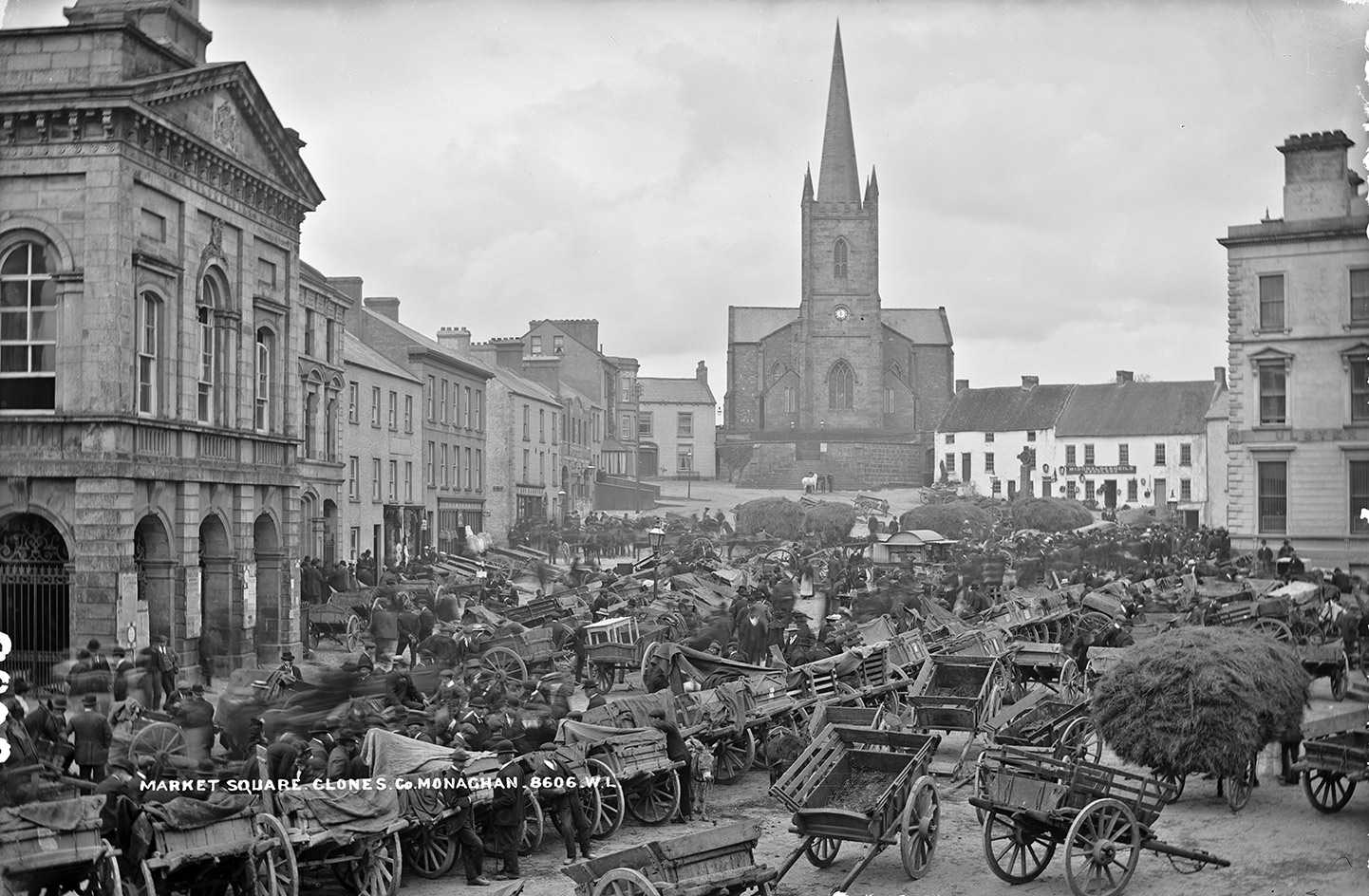
Monaghan in Clones County.
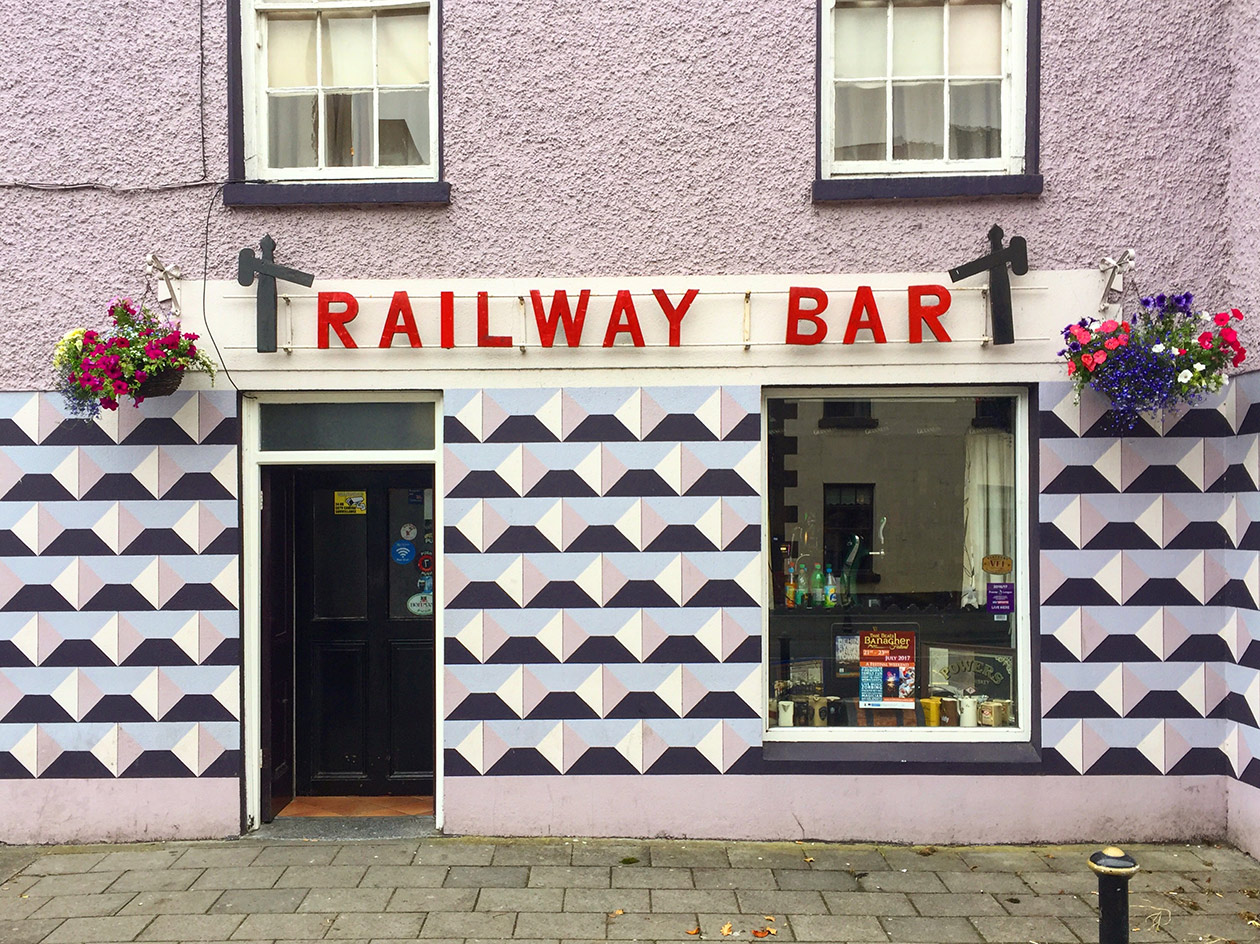
Railway Bar in Banagher in County Offaly. @our.type
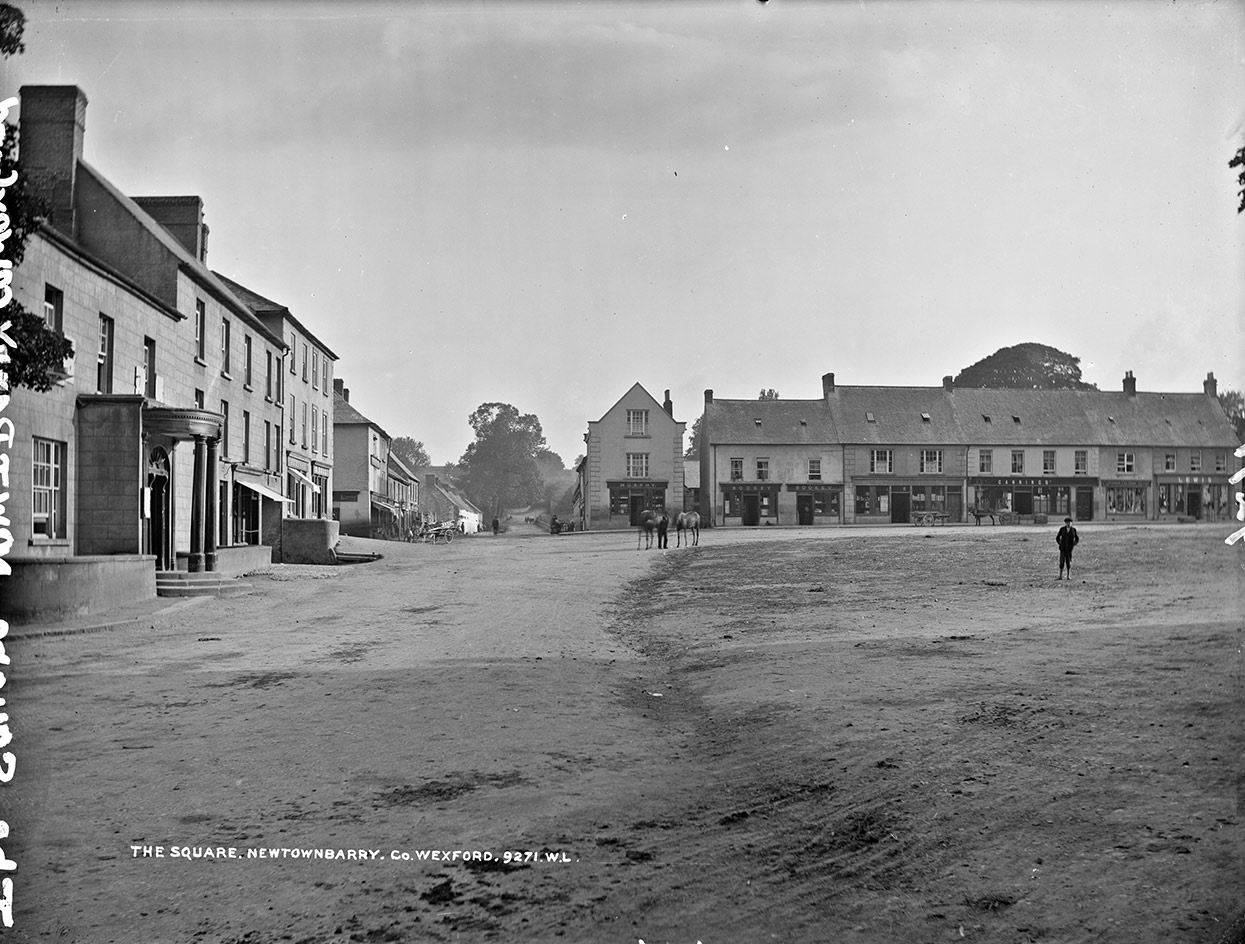
Newtownbarry Wexford (now Bunclody).
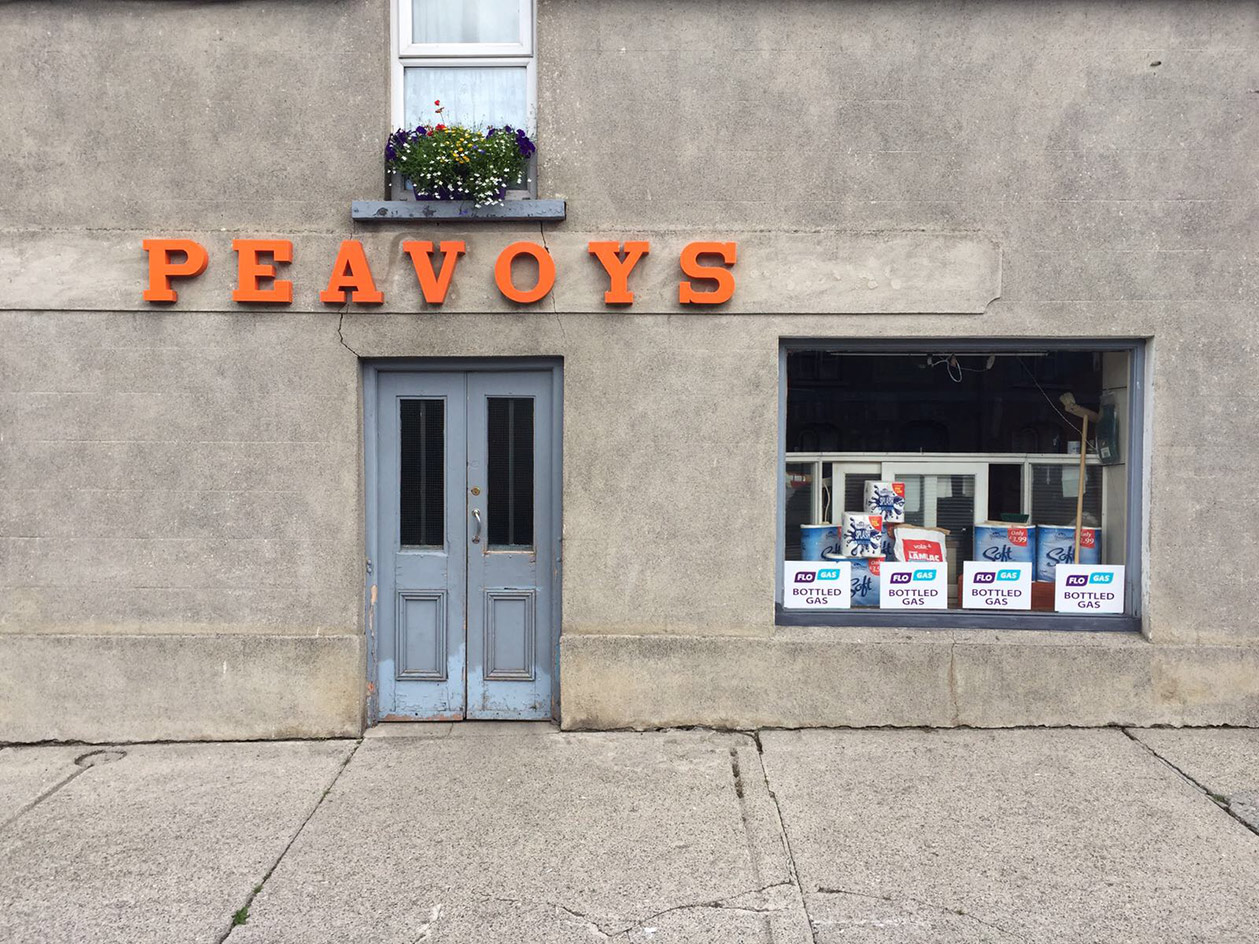
Peavoys in Kinnitty, County Offaly. @our.type
INFORMATION
For more information, visit the Irish pavilion at Venice Architecture Biennale Free market website
Receive our daily digest of inspiration, escapism and design stories from around the world direct to your inbox.
Harriet Thorpe is a writer, journalist and editor covering architecture, design and culture, with particular interest in sustainability, 20th-century architecture and community. After studying History of Art at the School of Oriental and African Studies (SOAS) and Journalism at City University in London, she developed her interest in architecture working at Wallpaper* magazine and today contributes to Wallpaper*, The World of Interiors and Icon magazine, amongst other titles. She is author of The Sustainable City (2022, Hoxton Mini Press), a book about sustainable architecture in London, and the Modern Cambridge Map (2023, Blue Crow Media), a map of 20th-century architecture in Cambridge, the city where she grew up.
-
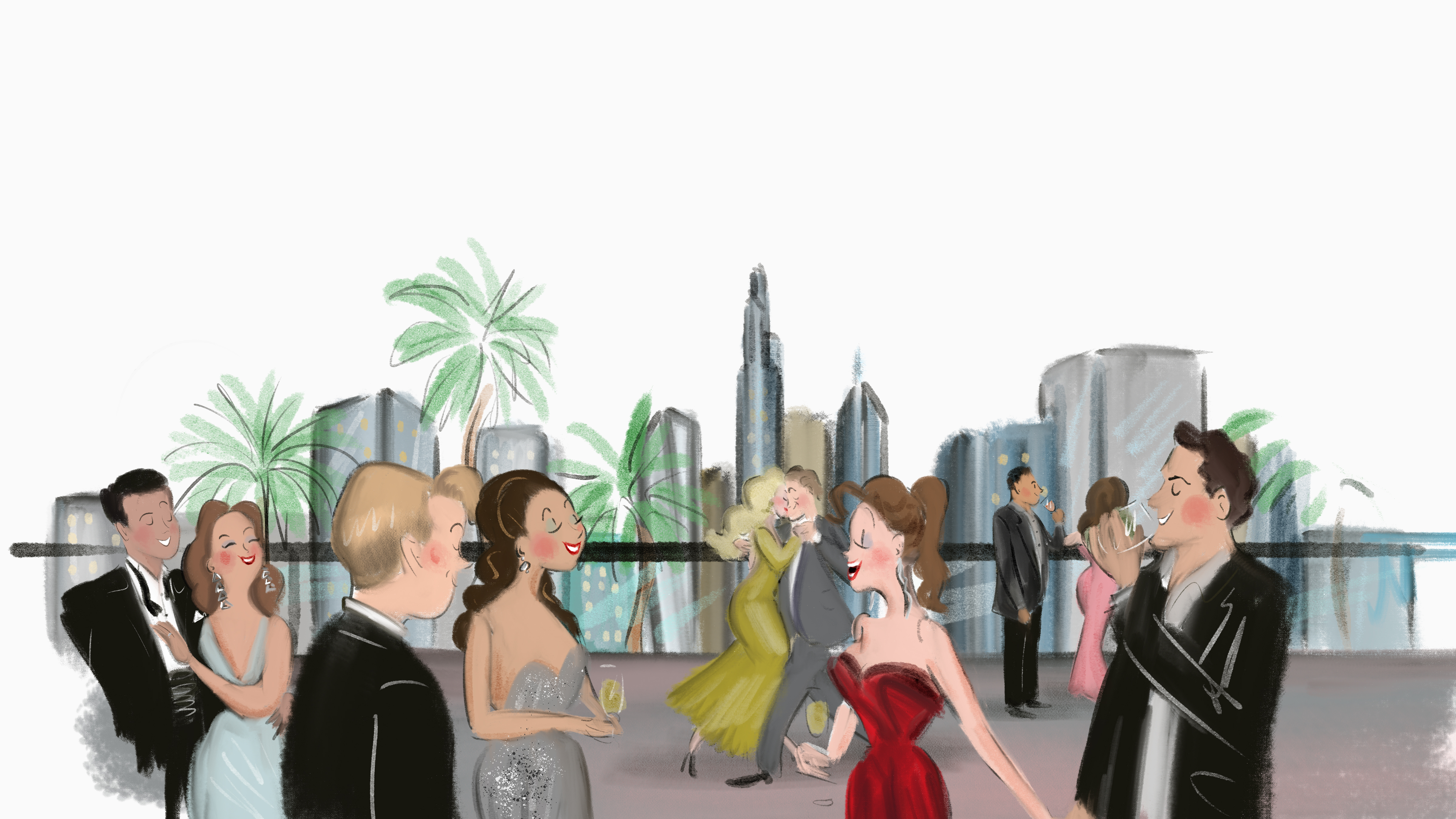 St. Regis Hotels and Resorts illustrates its spirit of celebration
St. Regis Hotels and Resorts illustrates its spirit of celebrationA collaboration between St. Regis and New York artist Tug Rice captures the storied brand’s Gilded Age glamour and decadent modernity
-
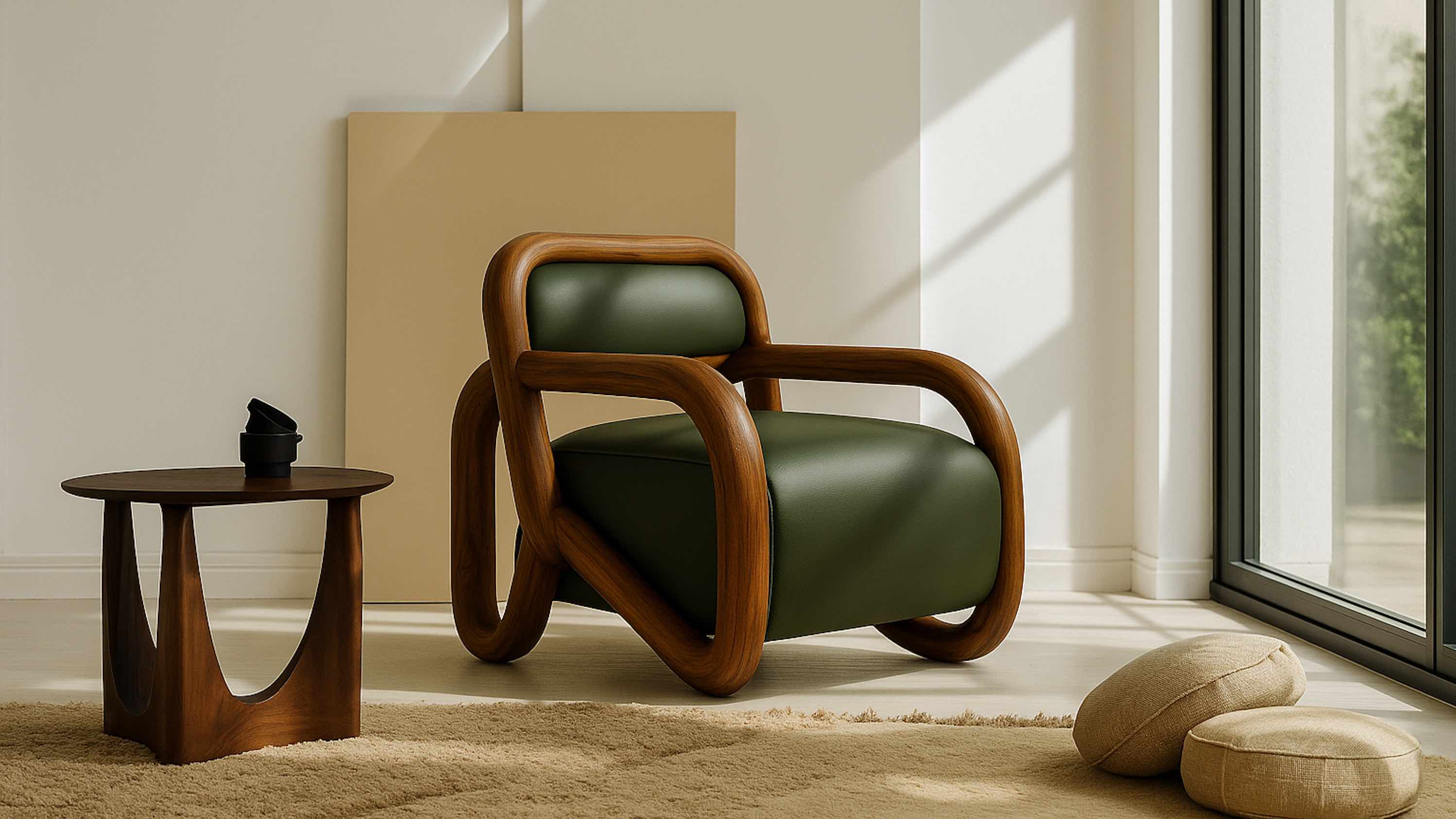 Five women-led studios reshaping Indian creativity at Design Mumbai 2025
Five women-led studios reshaping Indian creativity at Design Mumbai 2025Design Mumbai 2025 opens 26-29 November – Wallpaper* meets five women-led local brands exhibiting at this year's show
-
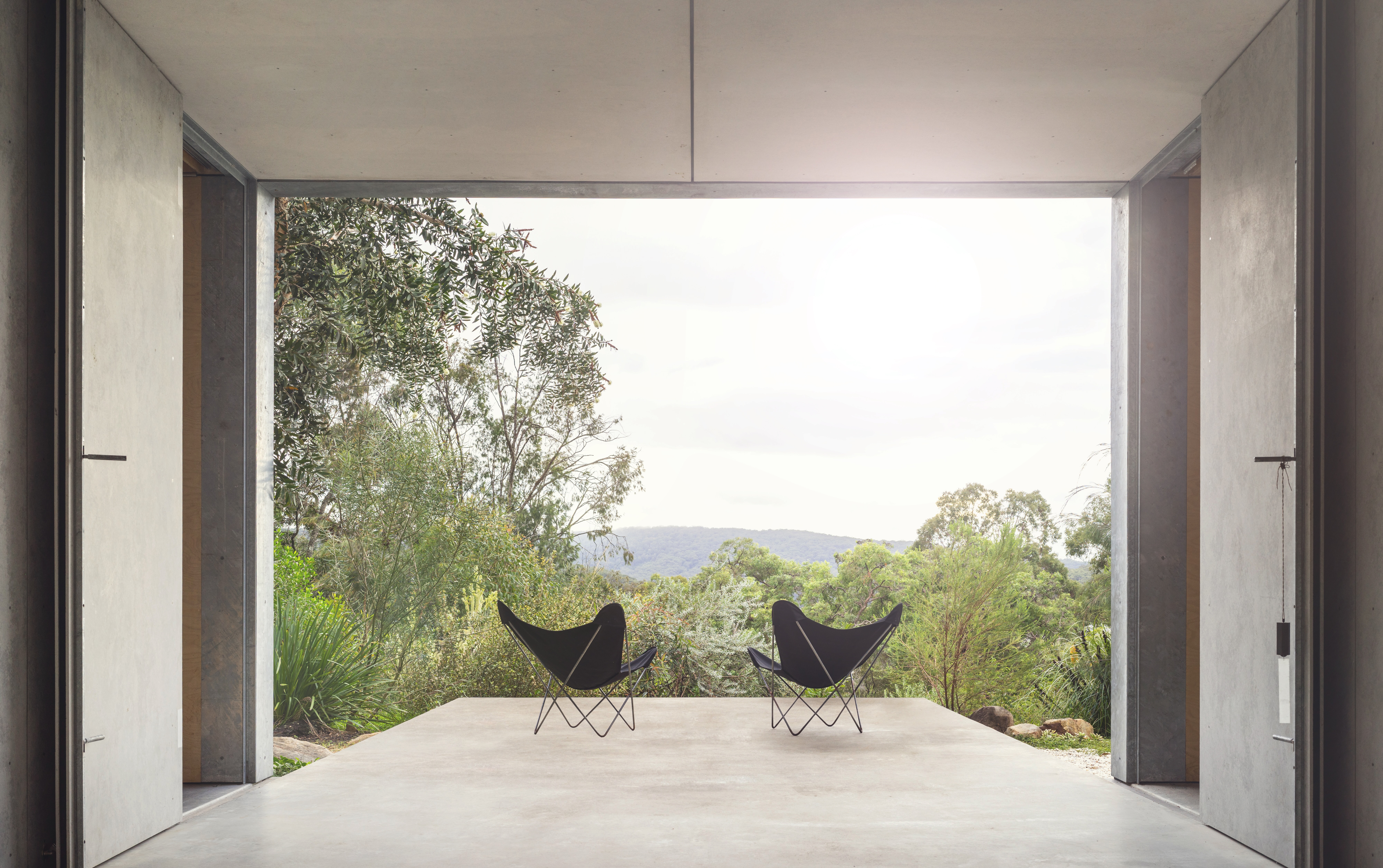 An Australian holiday home is designed as a bushfire-proof sanctuary
An Australian holiday home is designed as a bushfire-proof sanctuary‘Amongst the Eucalypts’ by Jason Gibney Design Workshop (JGDW) rethinks life – and architecture – in fire-prone landscapes, creating a minimalist holiday home that’s meant to last
-
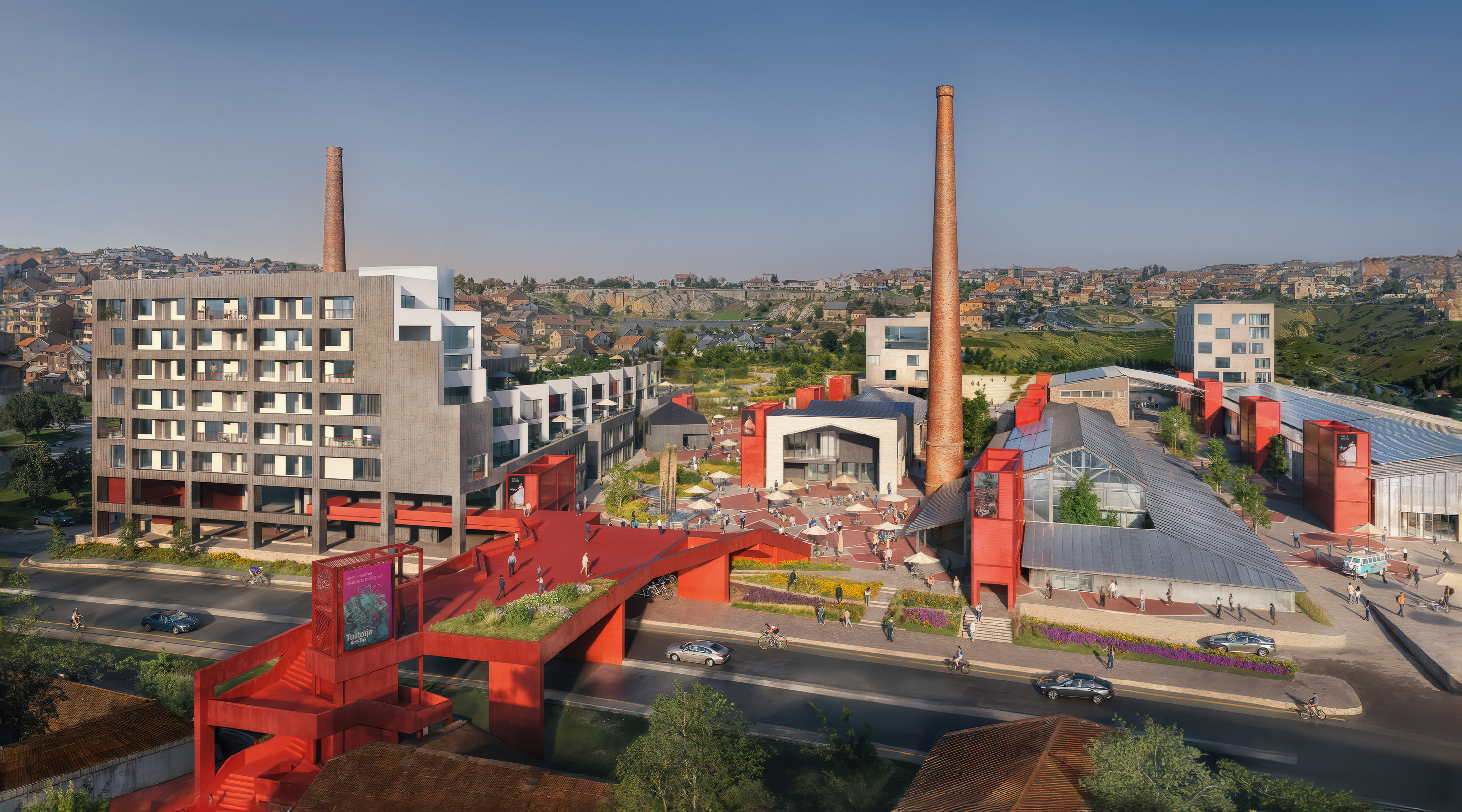 At the Holcim Foundation Forum and its Grand Prizes, sustainability is both urgent and hopeful
At the Holcim Foundation Forum and its Grand Prizes, sustainability is both urgent and hopefulThe Holcim Foundation Forum just took place in Venice, culminating in the announcement of the organisation's Grand Prizes, the projects especially honoured among 20 previously announced winning designs
-
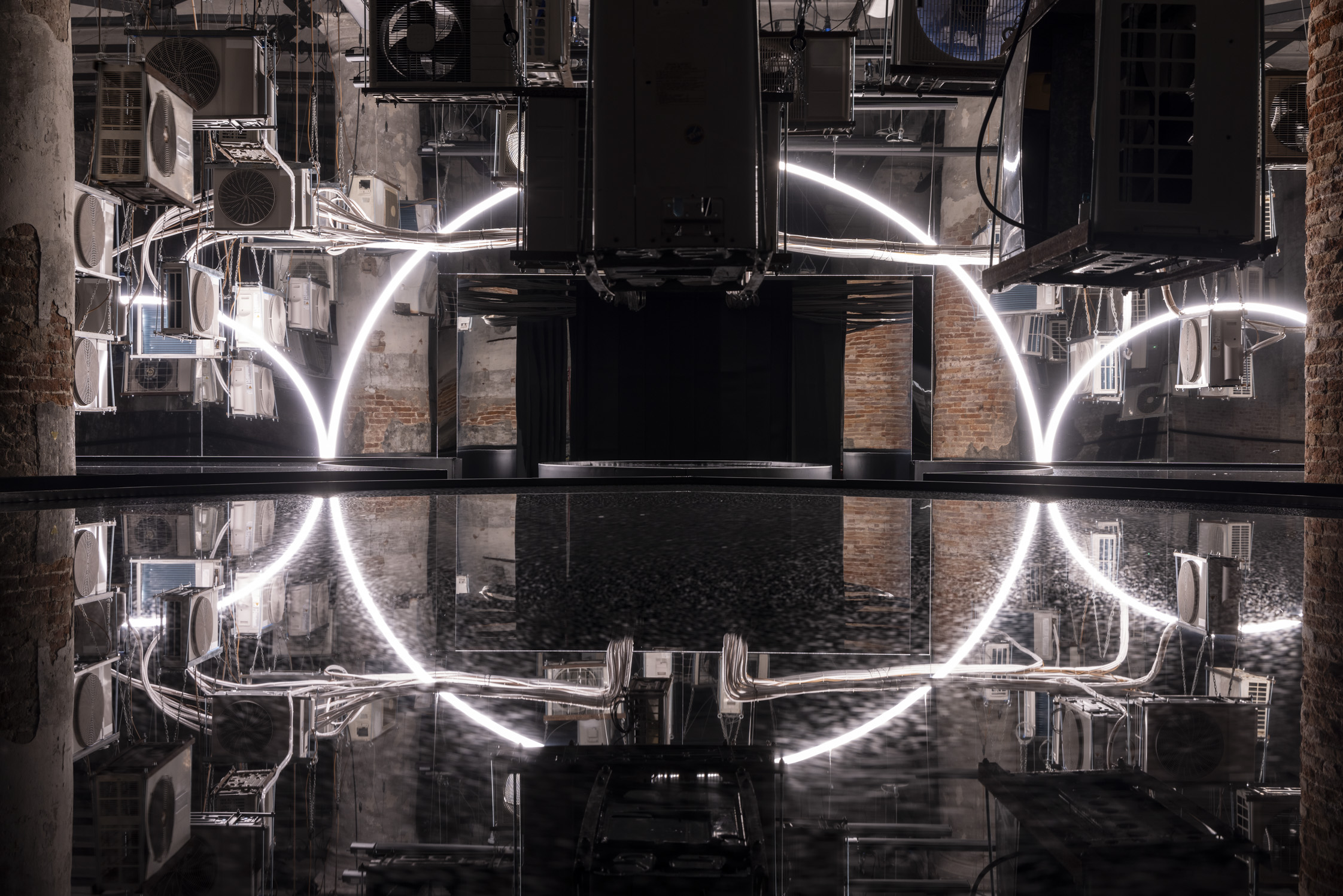 Carlo Ratti reflects on his bold Venice Architecture Biennale as it closes this weekend
Carlo Ratti reflects on his bold Venice Architecture Biennale as it closes this weekendThe Venice Architecture Biennale opens with excitement and fanfare every two years; as the 2025 edition draws to a close, we take stock with its curator Carlo Ratti and ask him, what next?
-
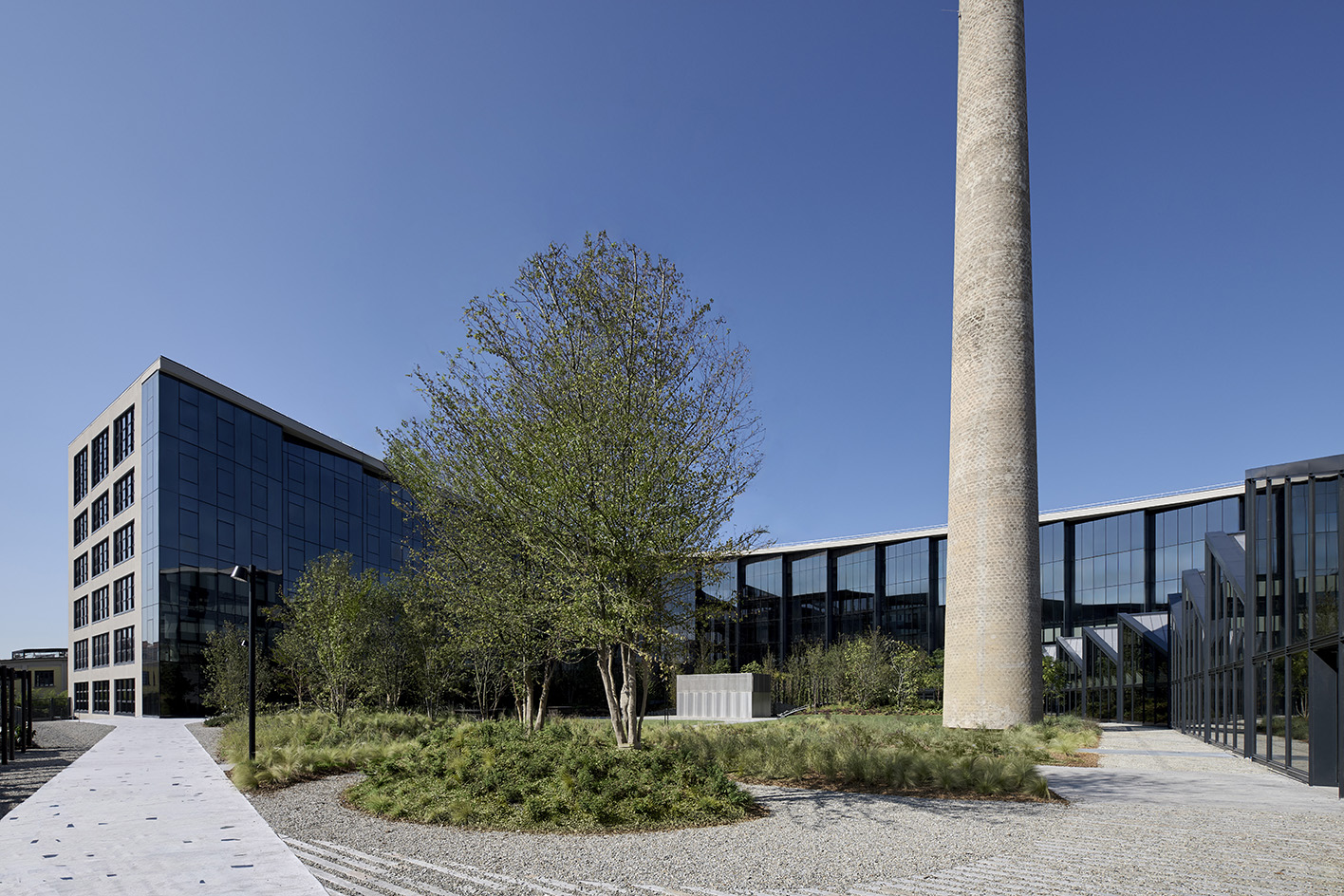 Step inside Casa Moncler, the brand’s sustainable and highly creative Milanese HQ
Step inside Casa Moncler, the brand’s sustainable and highly creative Milanese HQCasa Moncler opens its doors in a masterfully reimagined Milanese industrial site, blending modern minimalism and heritage, courtesy of ACPV Architects Antonio Citterio Patricia Viel
-
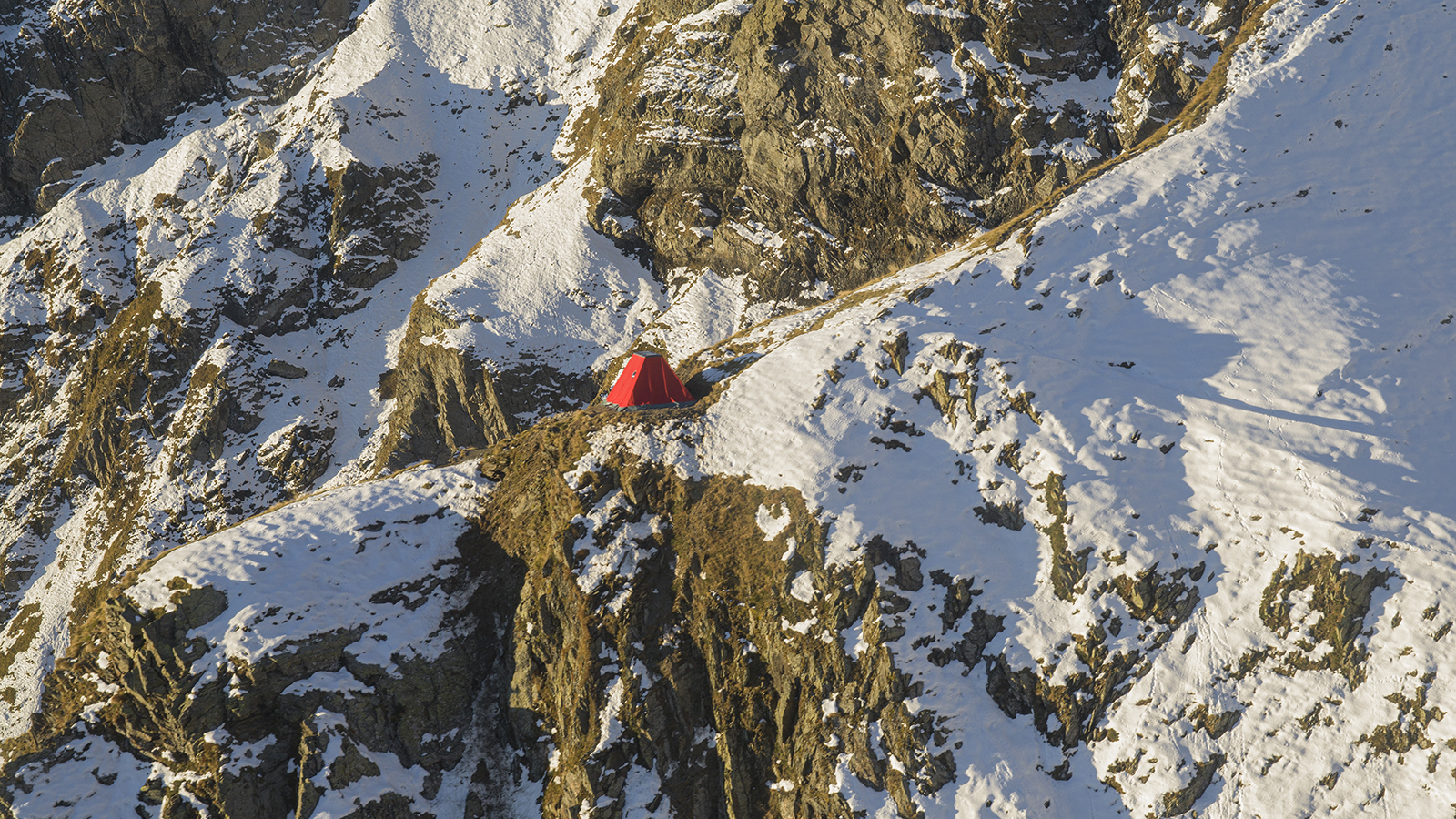 Aldo Frattini Bivouac is a mountain shelter, but not as you know it
Aldo Frattini Bivouac is a mountain shelter, but not as you know itA new mountain shelter on the northern Italian pre-Alp region of Val Seriana, Aldo Frattini Bivouac is an experimental and aesthetically rich, compact piece of architecture
-
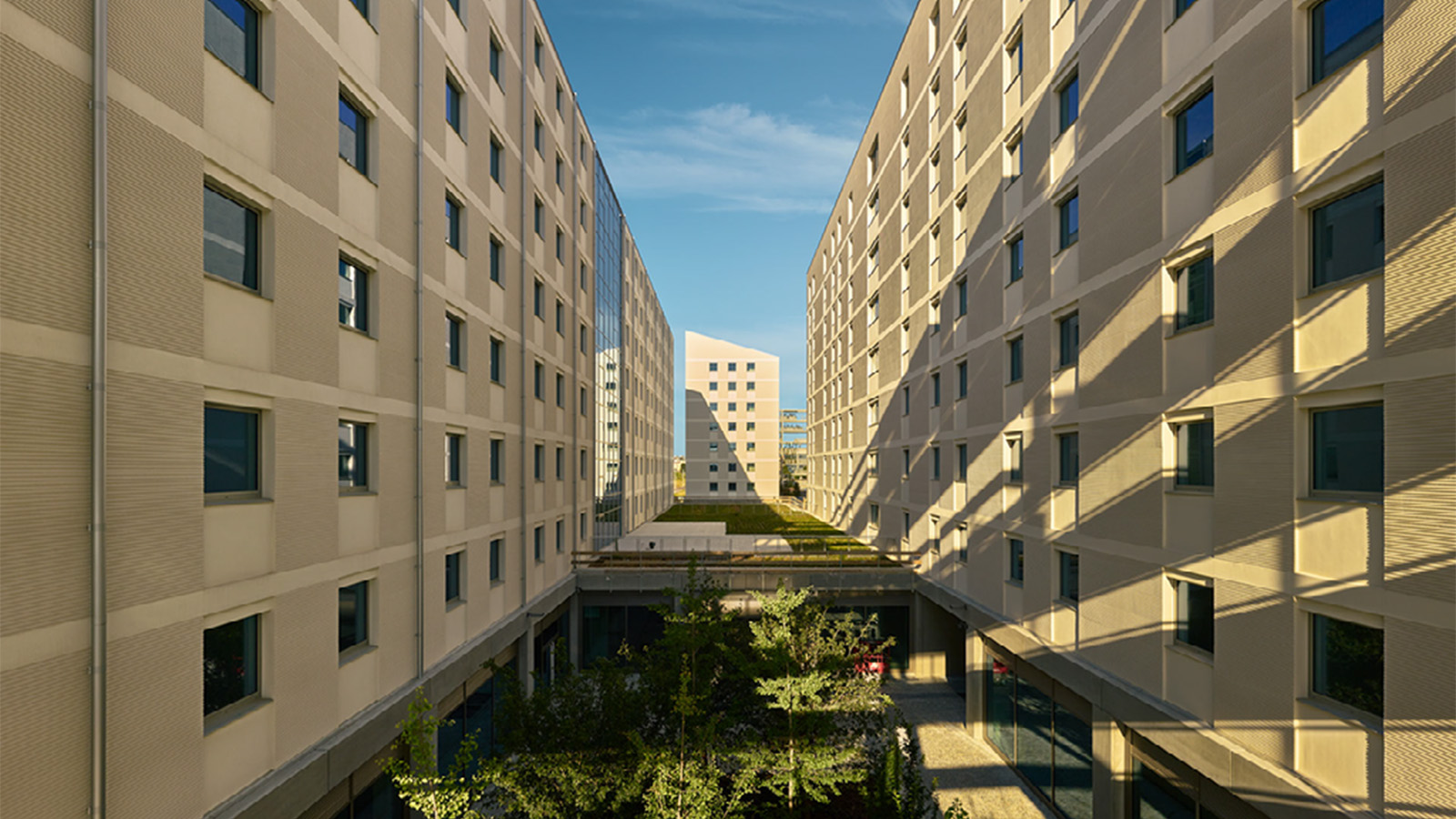 The 2026 Winter Olympics Village is complete. Take a look inside
The 2026 Winter Olympics Village is complete. Take a look insideAhead of the 2026 Winter Olympics, taking place in Milan in February, the new Olympic Village Plaza is set to be a bustling community hub, designed by Skidmore, Owings & Merrill
-
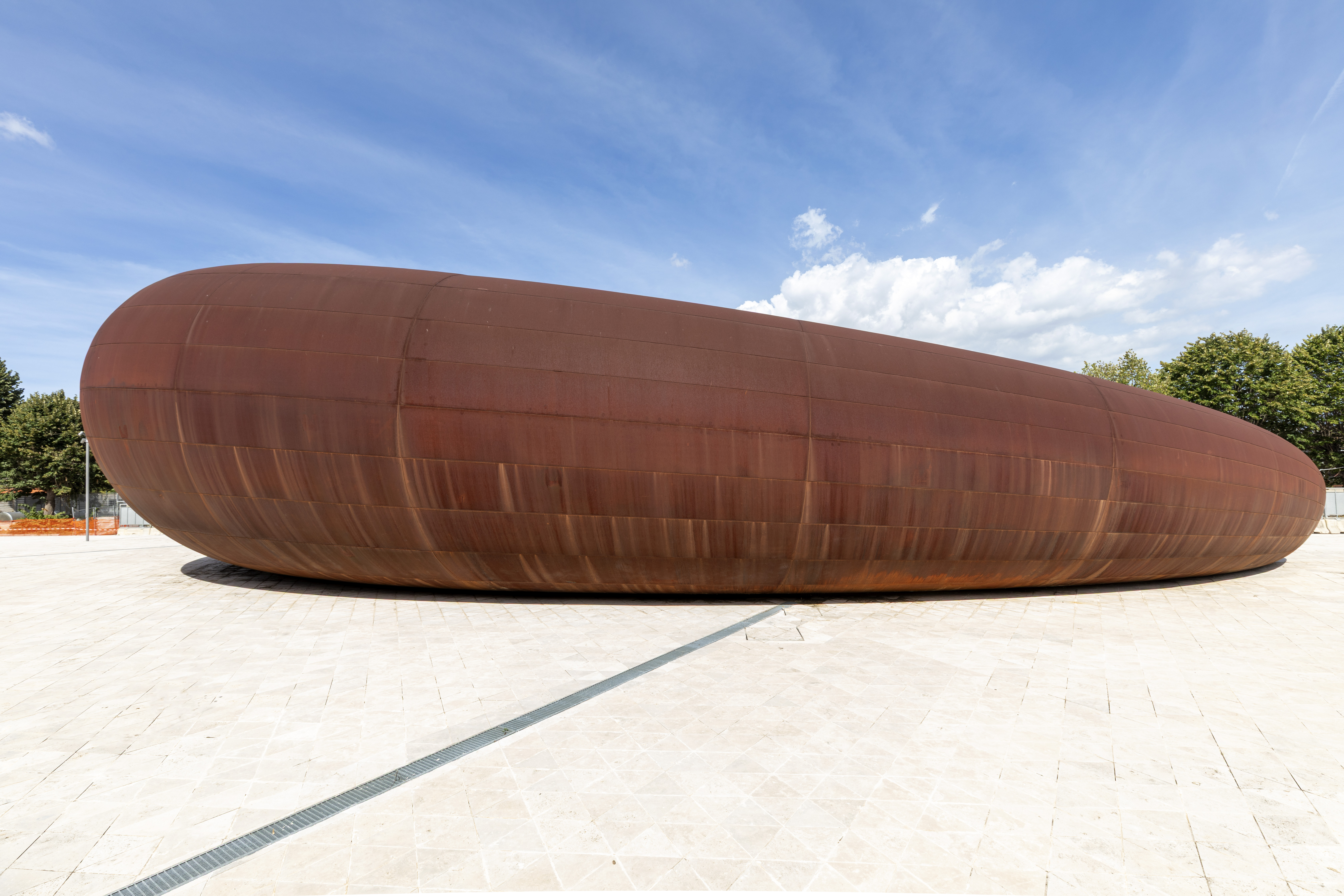 Anish Kapoor designs Naples station as a reflection of ‘what it really means to go underground’
Anish Kapoor designs Naples station as a reflection of ‘what it really means to go underground’A new Naples station by artist Anish Kapoor blends art and architecture, while creating an important piece of infrastructure for the southern Italian city
-
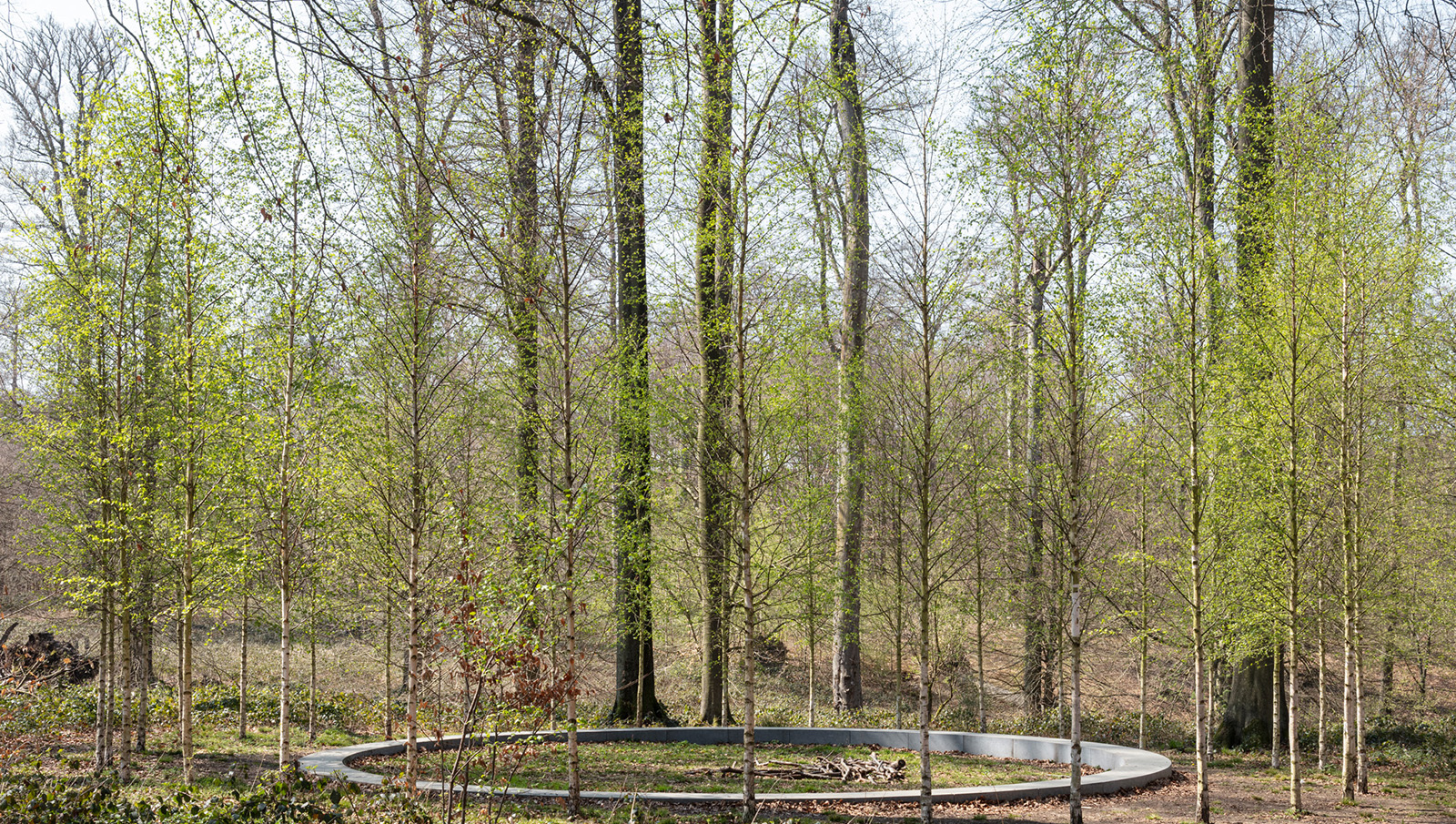 ‘Landscape architecture is the queen of science’: Emanuele Coccia in conversation with Bas Smets
‘Landscape architecture is the queen of science’: Emanuele Coccia in conversation with Bas SmetsItalian philosopher Emanuele Coccia meets Belgian landscape architect Bas Smets to discuss nature, cities and ‘biospheric thinking’
-
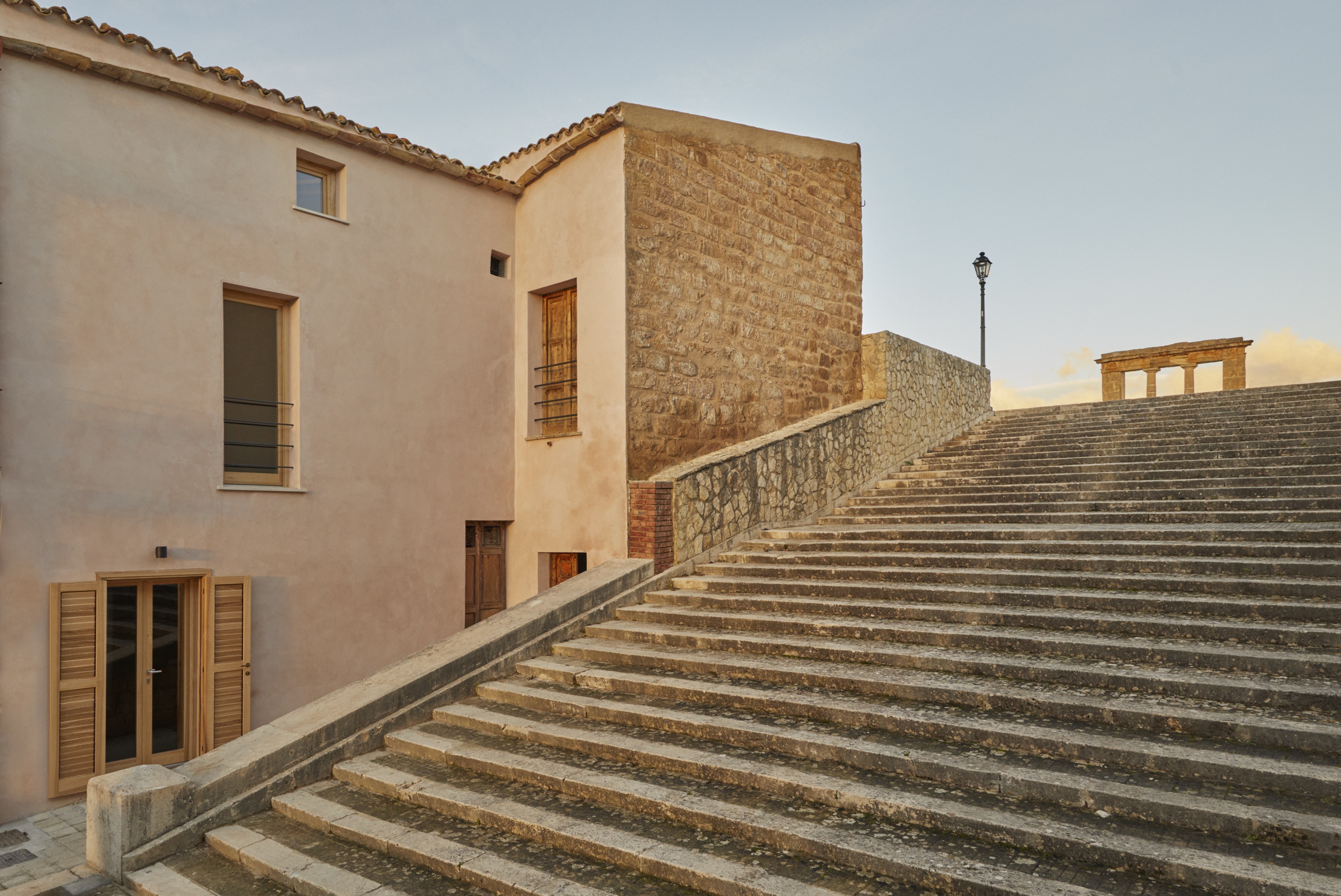 This historic Sicilian house cost one euro. Go inside its transformation
This historic Sicilian house cost one euro. Go inside its transformationPalermo-based firm Didea teamed up with AirBNB to reimagine the once-dilapidated property in vibrant colour blocks